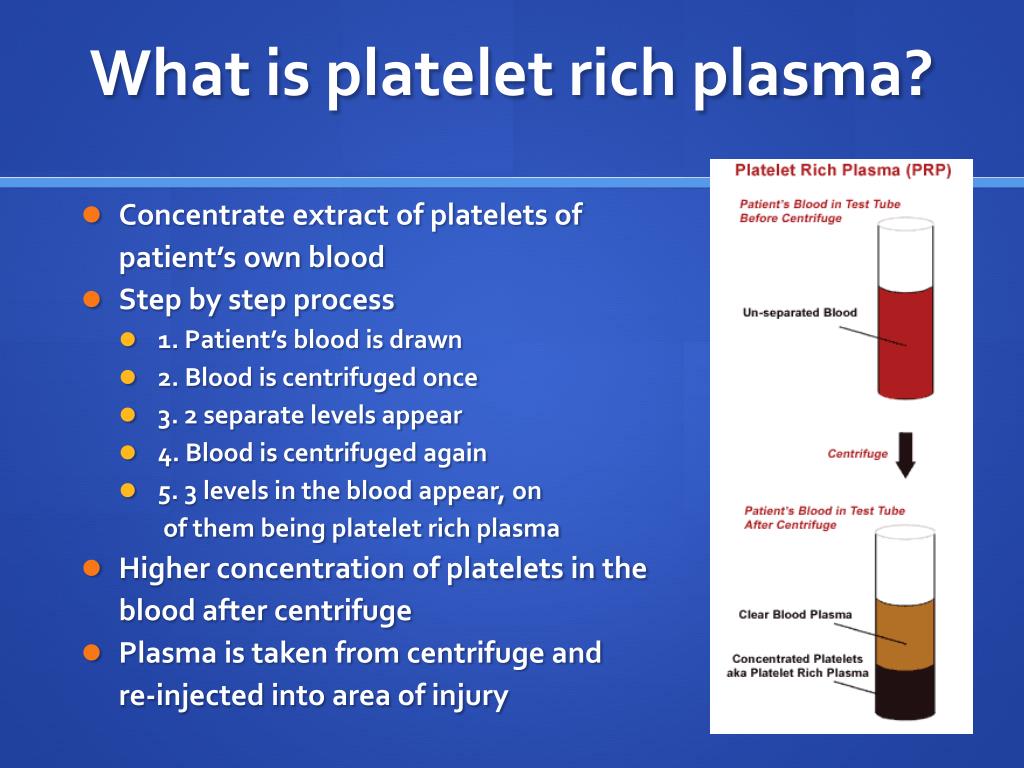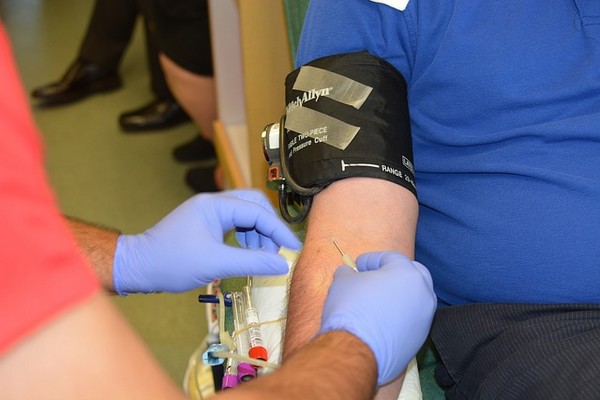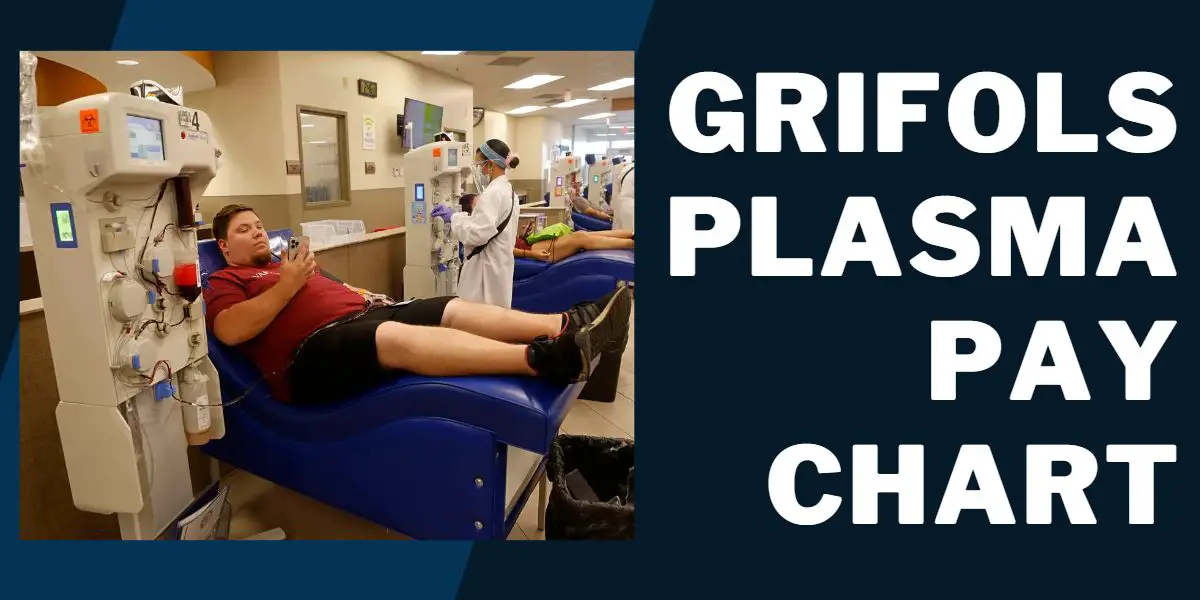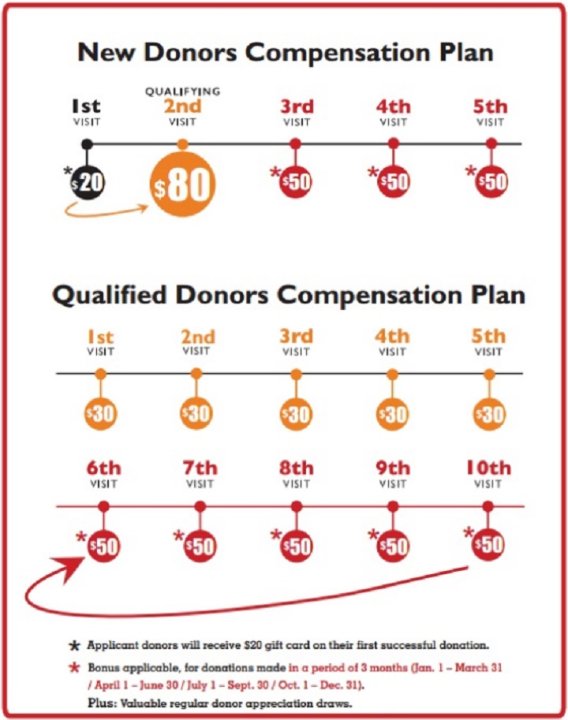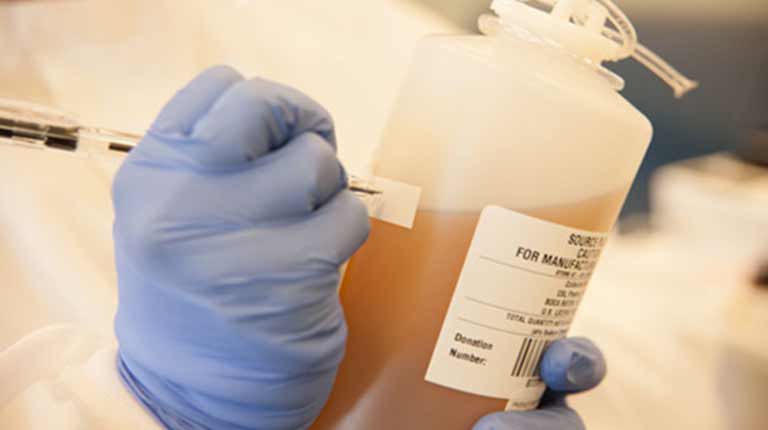What is Plasma Donation and Why is it Valuable?
Plasma donation is the process of collecting the liquid portion of blood, which is rich in antibodies, clotting factors, and other vital proteins. This valuable resource is used to create life-saving therapies for patients with rare and serious diseases, such as hemophilia, immunodeficiency disorders, and certain types of cancer.
The demand for plasma has been increasing steadily over the years, driven by advances in medical technology and the growing need for plasma-derived therapies. As a result, plasma donation has become a vital source of income for many individuals, with some donors earning up to $1,000 per month or more, depending on the frequency of donations and the location of the donation center.
But how much do you get from selling plasma? The answer varies depending on several factors, including the donor’s weight, the frequency of donations, and the location of the donation center. On average, plasma donors can earn between $20 to $50 per donation, with some centers offering more for frequent donors or those with rare blood types.
Despite the financial benefits, plasma donation is not just about the money. It’s also an opportunity to contribute to the development of life-saving therapies and make a positive impact on the lives of patients in need. By donating plasma, individuals can help ensure a steady supply of this vital resource and support the ongoing research and development of new treatments.
In the United States alone, there are over 400 plasma donation centers, with many more located around the world. These centers are operated by reputable companies, such as Grifols, BioLife, and CSL Plasma, which prioritize donor safety and provide a clean and comfortable environment for the donation process.
As the demand for plasma continues to grow, it’s essential to understand the process of plasma donation, the benefits and risks involved, and the factors that affect plasma donation pay. In this article, we’ll delve into the world of plasma donation, exploring the ins and outs of this valuable resource and providing tips and strategies for maximizing earnings.
How to Get Paid for Selling Plasma: A Step-by-Step Guide
To start selling plasma, individuals must meet certain eligibility requirements, which typically include being at least 18 years old, weighing at least 110 pounds, and being in good overall health. Potential donors must also pass a medical examination and screening process, which includes a review of their medical history and a test for infectious diseases.
Once eligible, donors can register with a reputable plasma donation center, such as Grifols, BioLife, or CSL Plasma. The registration process typically involves filling out a questionnaire, providing identification and proof of residency, and undergoing a medical examination.
After registration, donors will undergo a screening process, which includes a physical examination, a review of their medical history, and a test for infectious diseases. This process is designed to ensure the safety of both the donor and the recipient of the plasma.
Once cleared to donate, individuals can begin the plasma donation process, which typically takes about 1-2 hours to complete. During this time, donors will be seated comfortably and a sterile needle will be inserted into a vein in their arm. The plasma will be collected and the remaining blood components will be returned to the donor’s body.
After the donation process is complete, donors will be compensated for their time and effort. The amount of compensation varies depending on the donation center and the individual’s eligibility, but on average, donors can earn between $20 to $50 per donation. Some centers may also offer additional incentives, such as referral bonuses or loyalty programs.
It’s essential to note that not all plasma donation centers are created equal. When selecting a center, individuals should research the company’s reputation, read reviews from other donors, and ensure that the center is licensed and regulated by the relevant authorities.
By following these steps and selecting a reputable plasma donation center, individuals can safely and effectively sell their plasma and earn a supplemental income. Remember, the demand for plasma is high, and by donating, individuals can contribute to the development of life-saving therapies and earn a decent income in the process.
Plasma Donation Centers: What to Expect and How Much You Can Earn
There are several types of plasma donation centers, each with its own unique characteristics and compensation rates. Some of the most popular plasma donation centers include Grifols, BioLife, and CSL Plasma. These centers are located throughout the United States and offer a safe and comfortable environment for donors.
Grifols, for example, has over 200 plasma donation centers across the United States and offers a compensation rate of up to $400 per month for frequent donors. BioLife, on the other hand, has over 100 plasma donation centers and offers a compensation rate of up to $300 per month for frequent donors. CSL Plasma, which has over 100 plasma donation centers, offers a compensation rate of up to $250 per month for frequent donors.
In addition to these popular plasma donation centers, there are also several smaller, independent centers that offer competitive compensation rates. These centers may offer more flexible scheduling and a more personalized experience for donors.
When selecting a plasma donation center, it’s essential to consider several factors, including the center’s reputation, location, and compensation rate. Donors should also research the center’s safety record and read reviews from other donors to ensure that they are making an informed decision.
On average, plasma donors can earn between $20 to $50 per donation, with some centers offering more for frequent donors or those with rare blood types. The frequency of donations and the location of the donation center can also impact the overall earnings. For example, donors who live in areas with a high demand for plasma may be able to earn more than those who live in areas with a lower demand.
Overall, plasma donation centers offer a safe and convenient way for individuals to earn a supplemental income while contributing to the development of life-saving therapies. By researching and selecting a reputable plasma donation center, donors can ensure that they are getting the best possible compensation rate for their time and effort.
The Payment Process: How Much Can You Expect to Earn from Selling Plasma?
The payment process for selling plasma varies depending on the donation center and the individual’s eligibility. On average, plasma donors can earn between $20 to $50 per donation, with some centers offering more for frequent donors or those with rare blood types.
The frequency of payments also varies, but most donation centers pay donors on a weekly or bi-weekly basis. Some centers may also offer a one-time payment for first-time donors or a referral bonus for bringing in new donors.
Payment methods also vary, but most donation centers offer a debit card or a direct deposit into the donor’s bank account. Some centers may also offer a check or a prepaid card.
It’s essential to note that the compensation rate for selling plasma can vary significantly depending on the location and the demand for plasma. For example, donors who live in areas with a high demand for plasma may be able to earn more than those who live in areas with a lower demand.
To give you a better idea of how much you can expect to earn from selling plasma, here are some examples of compensation rates from popular plasma donation centers:
Grifols: $20 to $40 per donation, with a maximum of $400 per month for frequent donors
BioLife: $20 to $30 per donation, with a maximum of $300 per month for frequent donors
CSL Plasma: $20 to $30 per donation, with a maximum of $250 per month for frequent donors
Keep in mind that these are just examples, and the actual compensation rate may vary depending on the location and the individual’s eligibility.
Overall, selling plasma can be a lucrative way to earn a supplemental income, especially for frequent donors. By understanding the payment process and the compensation rates, donors can make informed decisions about their plasma donation experience.
Factors Affecting Plasma Donation Pay: Weight, Frequency, and Location
When it comes to selling plasma, several factors can affect the amount of money you can earn. Understanding these factors can help you maximize your earnings and make the most of your plasma donation experience.
One of the most significant factors affecting plasma donation pay is the donor’s weight. Generally, donors who weigh more can earn more per donation, as they are able to donate more plasma. For example, a donor who weighs 150 pounds may be able to earn $20 per donation, while a donor who weighs 200 pounds may be able to earn $30 per donation.
Frequency of donations is another factor that can impact plasma donation pay. Donors who donate regularly can earn more than those who donate sporadically. This is because frequent donors are able to provide a steady supply of plasma, which is in high demand. Some donation centers may also offer loyalty programs or bonuses for frequent donors.
Location is also a significant factor in determining plasma donation pay. Donors who live in areas with a high demand for plasma may be able to earn more than those who live in areas with a lower demand. For example, donors who live in urban areas may be able to earn more than those who live in rural areas.
Other factors that can affect plasma donation pay include the type of plasma being donated, the donor’s blood type, and the donor’s overall health. For example, donors with rare blood types may be able to earn more than those with common blood types.
By understanding these factors, donors can make informed decisions about their plasma donation experience and maximize their earnings. It’s also essential to note that while these factors can impact plasma donation pay, they do not affect the safety and quality of the plasma donation process.
So, how much do you get from selling plasma? The answer depends on several factors, including your weight, frequency of donations, and location. By understanding these factors and making informed decisions, you can maximize your earnings and make the most of your plasma donation experience.
Maximizing Your Earnings: Tips for Frequent Plasma Donors
As a frequent plasma donor, you can maximize your earnings by following a few simple tips. Maintaining a healthy lifestyle is essential to ensure that you are eligible to donate plasma regularly. This includes eating a balanced diet, staying hydrated, and getting regular exercise.
Donating regularly is also crucial to maximizing your earnings. Most plasma donation centers have a schedule for frequent donors, and by sticking to this schedule, you can ensure that you are donating as often as possible. Additionally, many donation centers offer loyalty programs or bonuses for frequent donors, which can help increase your earnings.
Taking advantage of referral programs is another way to maximize your earnings. Many plasma donation centers offer referral programs that reward donors for bringing in new donors. By referring friends and family members, you can earn extra money and help increase the supply of plasma.
It’s also essential to understand the payment structure of your plasma donation center. Some centers may offer more money for certain types of plasma or for donors with specific blood types. By understanding the payment structure, you can make informed decisions about your plasma donation experience and maximize your earnings.
Finally, it’s crucial to prioritize your health and safety as a plasma donor. This includes following the guidelines set by your donation center and reporting any adverse reactions or side effects. By prioritizing your health and safety, you can ensure that you are able to continue donating plasma and maximizing your earnings.
By following these tips, frequent plasma donors can maximize their earnings and make the most of their plasma donation experience. Remember, selling plasma is a valuable way to contribute to the medical field while earning a supplemental income. By being informed and proactive, you can make the most of this opportunity and achieve your financial goals.
Plasma Donation Safety and Risks: What You Need to Know
Plasma donation is a safe and well-established medical procedure, but like any medical procedure, it carries some risks and potential side effects. It’s essential to understand these risks and take steps to minimize them to ensure a safe and successful plasma donation experience.
Common side effects of plasma donation include fatigue, dizziness, and bruising at the needle site. These side effects are usually mild and temporary, but in some cases, they can be more severe. It’s crucial to report any adverse reactions or side effects to the donation center staff immediately.
More serious risks associated with plasma donation include citrate reaction, which can cause symptoms such as numbness, tingling, and muscle weakness. This reaction is usually caused by the citrate anticoagulant used in the plasma collection process and can be treated with calcium supplements.
To minimize the risks associated with plasma donation, donation centers take several measures to ensure donor safety. These measures include:
Screening donors for eligibility and medical history
Using sterile equipment and following proper infection control procedures
Monitoring donors’ vital signs and health status during the donation process
Providing clear instructions and guidelines for donors to follow before, during, and after the donation process
Ensuring that donors are aware of the potential risks and side effects associated with plasma donation
By understanding the potential risks and taking steps to minimize them, donors can ensure a safe and successful plasma donation experience. It’s also essential to remember that plasma donation is a valuable way to contribute to the medical field while earning a supplemental income.
Conclusion: Selling Plasma as a Valuable Source of Income
In conclusion, selling plasma is a valuable source of income that can provide individuals with a supplemental income while contributing to the medical field. By understanding the process of plasma donation, the importance of finding a reputable plasma donation center, and the factors that affect plasma donation pay, individuals can make informed decisions about their plasma donation experience.
Additionally, by following the tips and strategies outlined in this article, frequent plasma donors can maximize their earnings and make the most of their plasma donation experience. It’s essential to remember that plasma donation is a safe and well-established medical procedure, and by taking the necessary precautions and following the guidelines set by donation centers, individuals can ensure a safe and successful plasma donation experience.
So, how much do you get from selling plasma? The answer depends on several factors, including the type of plasma being donated, the frequency of donations, and the location of the donation center. However, by understanding the process of plasma donation and the factors that affect plasma donation pay, individuals can make informed decisions about their plasma donation experience and maximize their earnings.
In summary, selling plasma is a valuable source of income that can provide individuals with a supplemental income while contributing to the medical field. By understanding the process of plasma donation, finding a reputable plasma donation center, and following the tips and strategies outlined in this article, individuals can make the most of their plasma donation experience and achieve their financial goals.

